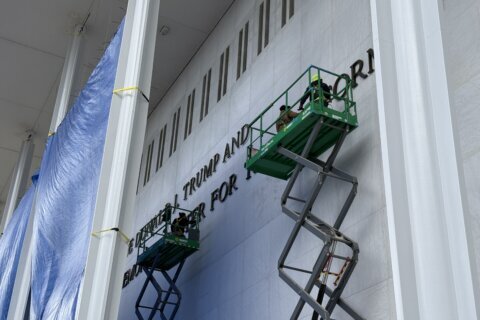In 1925, real estate developer Harry Wardman claimed to have housed 10% of D.C.’s population, thanks to his prolific and successful real estate and development business. Nowadays, it is alleged that as much as 3% of the city’s population still lives in properties he developed.
It is estimated that he was responsible for building approximately 3,000 buildings during his lifetime, which is “twice as much as the two most prolific developers of his period,” according to Sally Berk, a preservation activist. She is also the creator of the Wardman’s Washington website, which includes a database of buildings developed by Wardman.
Berk has based much of her life and research on this one developer. In her August 1988 George Washington University thesis, titled “The Richest Crop: The Row Houses of Harry Wardman (1869-1938), Washington, D.C. Developer,” she wrote, “It is arguably true … that no Washington builder before Wardman, and possibly no builder since, constructed as many buildings of merit.”
Some of the most iconic and well-known Wardman-developed buildings are the Hay-Adams Hotel, the St. Regis Hotel and the Wardman Tower. They’re the “trifecta” of iconic Wardman buildings, Berk said.
How did Wardman accomplish so much in so little time? He purchased swaths of land after landowners sold them when developing the streets platted north of Boundary Street (now known as Florida Avenue). Berk also claimed that it was much easier to obtain financing early in the 20th century due to less bureaucracy. Another major factor in Wardman’s success was the significant housing shortage that the city dealt with at the time.
For three decades, starting around 1904, Wardman was “largely responsible for institutionalizing the front porch row house in Washington,” Berk said. So prevalent are his homes that some real estate agents and writers will even describe these front porch row houses as being a “Wardman style,” though Caroline Mesrobian Hickman, who teaches architecture at the University of Maryland, told WTOP. “I’ve never heard of a ‘Wardman home.’ I would bet that that is something that a real estate agent has made up.”
Hickman is an adjunct faculty member at the School of Architecture at the University of Maryland, and her paternal grandfather, Mihran Mesrobian, worked as a chief architect under Wardman during his “heyday” in the 1920s.
On Wardman, Hickman described him as an “affable, social entrepreneur” who loved horse racing and automobiles.
“He rose really like a meteor … It’s really an incredible rise by your bootstraps story,” she said.
Wardman was born in Bradford, England, and left home at age 20 with seven shillings in his pocket. He set sail for America, landing in New York, where he worked as a floorwalker in a department store. (Note: Berk’s thesis reported that he was born in 1872, but she told WTOP in an interview that the correct year is actually 1869.)
Eventually, Wardman moved to the District in 1895, where construction opportunities were greater, and wages were slightly higher than in other parts of the country. This can be attributed to the dramatic population changes in D.C. following the Civil War. Fifteen years after the end of the war, the population of the city was nearly triple what it previously had been, increasing from 61,000 in 1860 to 178,000 in 1880, according to Berk.
Over the course of the 20th century before his death, Wardman’s career thrived until the stock market crash of 1929.
By this point, Hickman said Wardman was “done” with hotels and apartments but continued to build “modest family housing” until he died of cancer in 1938.








